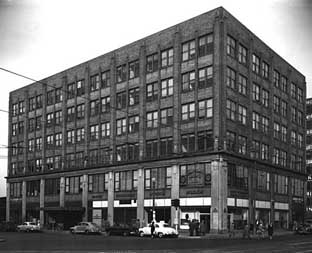Difference between revisions of "Sutton’s Place"
(table) |
|||
| Line 5: | Line 5: | ||
Sutton’s Bar, also known as Sutton’s Place or simply as “Sutton’s,” was a curious meeting place for queer men (and women for a time) in Minneapolis. The establishment was one of few that operated before and after the landmark Stonewall Riots in New York, a national event that affected the Twin Cities’ queer community and their popular haunts. | Sutton’s Bar, also known as Sutton’s Place or simply as “Sutton’s,” was a curious meeting place for queer men (and women for a time) in Minneapolis. The establishment was one of few that operated before and after the landmark Stonewall Riots in New York, a national event that affected the Twin Cities’ queer community and their popular haunts. | ||
| + | |||
| + | |||
| + | {| {{prettytable}} | ||
| + | ! | ||
| + | ! | ||
| + | |- | ||
| + | | Element | ||
| + | | <div style="text-align: center;"> | ||
| + | [[Image:Pf092365.jpg]] | ||
| + | </div> <div style="text-align: center;"> | ||
| + | <small>'''The Produce State Bank building in 1959, approximately 10 years before Sutton's relocated to this site'''</small> | ||
| + | </div> | ||
| + | |} | ||
Sutton’s began as a quiet neighborhood bar in the [[Sumner-Glenwood]] area of North Minneapolis. Like Kirmser’s Bar in St. Paul, Sutton’s Bar was an unpretentious establishment owned by a heterosexual married couple. Harold and Elizabeth Sutton lived nearby—their neighborhood, like others in North Minneapolis, was home to predominantly working-class Jewish and African-American residents. The area’s diversity likely provided a foundation to the queer-friendly atmosphere of Sutton’s in its early days. | Sutton’s began as a quiet neighborhood bar in the [[Sumner-Glenwood]] area of North Minneapolis. Like Kirmser’s Bar in St. Paul, Sutton’s Bar was an unpretentious establishment owned by a heterosexual married couple. Harold and Elizabeth Sutton lived nearby—their neighborhood, like others in North Minneapolis, was home to predominantly working-class Jewish and African-American residents. The area’s diversity likely provided a foundation to the queer-friendly atmosphere of Sutton’s in its early days. | ||
| + | |||
| + | |||
Revision as of 19:02, 4 March 2010
Glenwood and Humboldt Ave N.; 5th and Marquette; 7th St. N. and 1st Ave. N., Minneapolis
Sutton’s Bar, also known as Sutton’s Place or simply as “Sutton’s,” was a curious meeting place for queer men (and women for a time) in Minneapolis. The establishment was one of few that operated before and after the landmark Stonewall Riots in New York, a national event that affected the Twin Cities’ queer community and their popular haunts.
| Element | The Produce State Bank building in 1959, approximately 10 years before Sutton's relocated to this site |
Sutton’s began as a quiet neighborhood bar in the Sumner-Glenwood area of North Minneapolis. Like Kirmser’s Bar in St. Paul, Sutton’s Bar was an unpretentious establishment owned by a heterosexual married couple. Harold and Elizabeth Sutton lived nearby—their neighborhood, like others in North Minneapolis, was home to predominantly working-class Jewish and African-American residents. The area’s diversity likely provided a foundation to the queer-friendly atmosphere of Sutton’s in its early days.
Sutton’s moved into the old Produce State Bank Building at 7th Street North and First Avenue North in the early 1960s. 20 years before gentrification, the rough area was home to vacating warehouses and cheap wholesalers. Harold and Elizabeth possibly saw business opportunity in the neighborhood, but they likely cared more about cheap rent.
The bar’s dramatic change came when Evelyn Sutton sold the bar to Ernest “Ernie” Pesis in 1966. Pesis, a former owner of the State Bar in the Gateway District, was known to the queer community as a member of organized crime. With his brother, the crooked owner used Sutton’s solely for its considerable profit.
Regardless of ownership, Sutton’s became an immensely popular site for “disco bunnies,” or young gay men with a penchant for dancing. Sutton’s grew into other parts of the old bank as time progressed—even to the vaults—and competed with the Gay 90s for a brief period. However, the club’s success didn’t offset Pesis’ questionable financial dealings—he eventually sold Sutton’s to “Andy” Anderson and John Moore, and they created The Saloon.
This page is still under construction. -SVC
Part of Minneapolis/St. Paul, MN: 100 Queer Places in Minnesota History, (1860-1969), (1969-2010)
